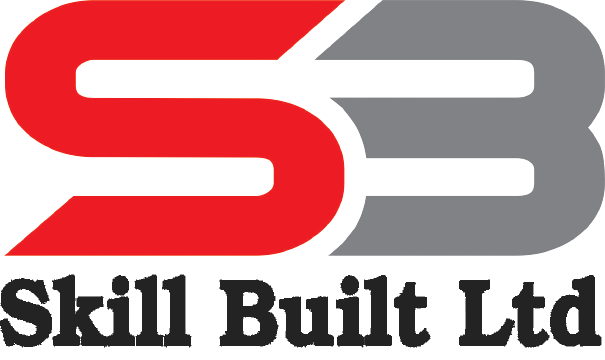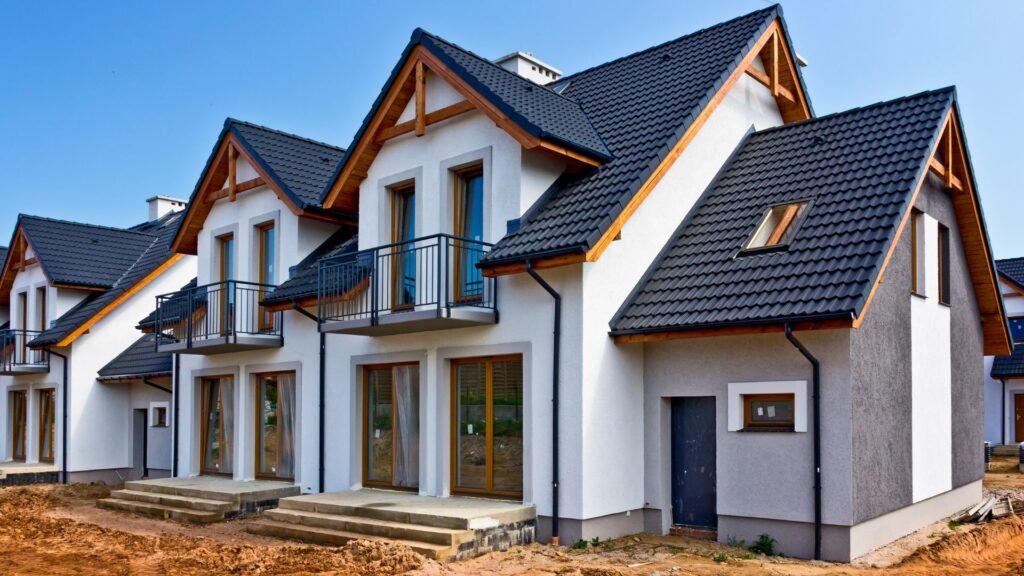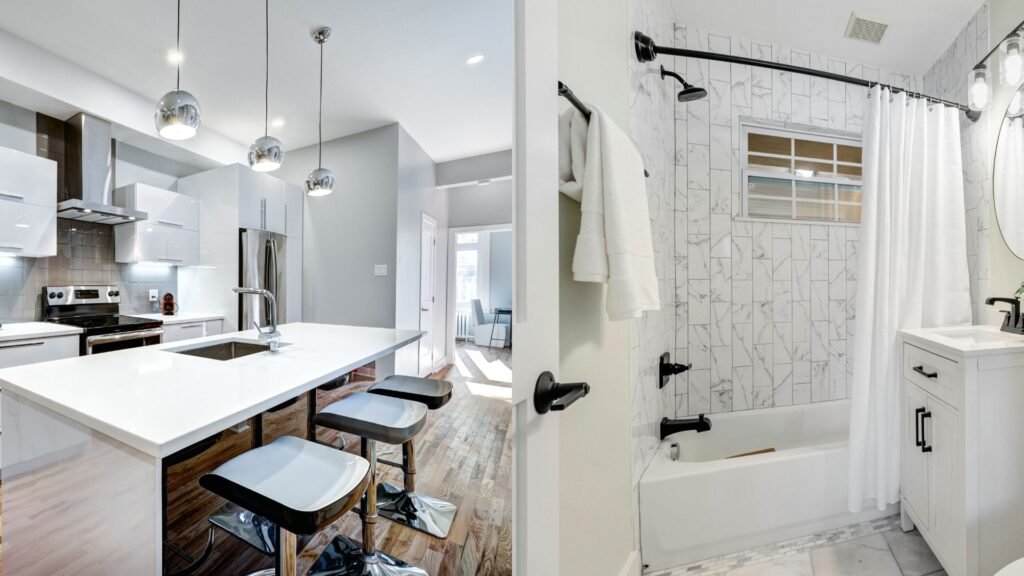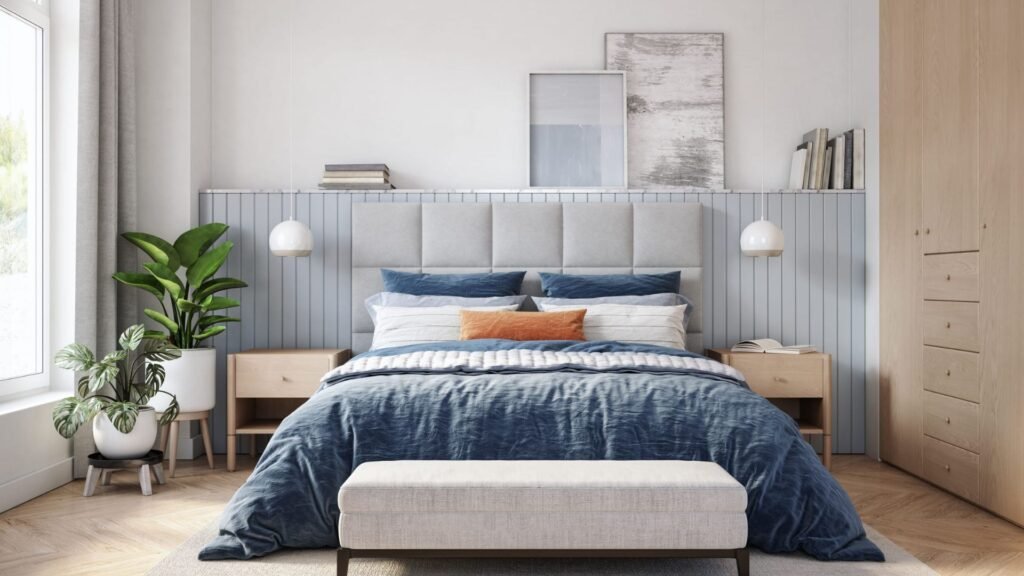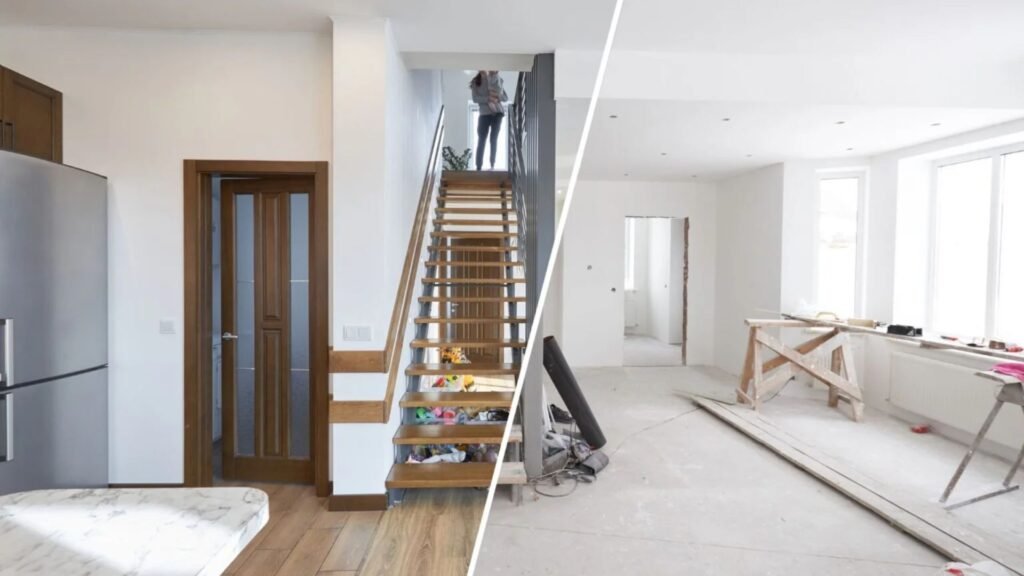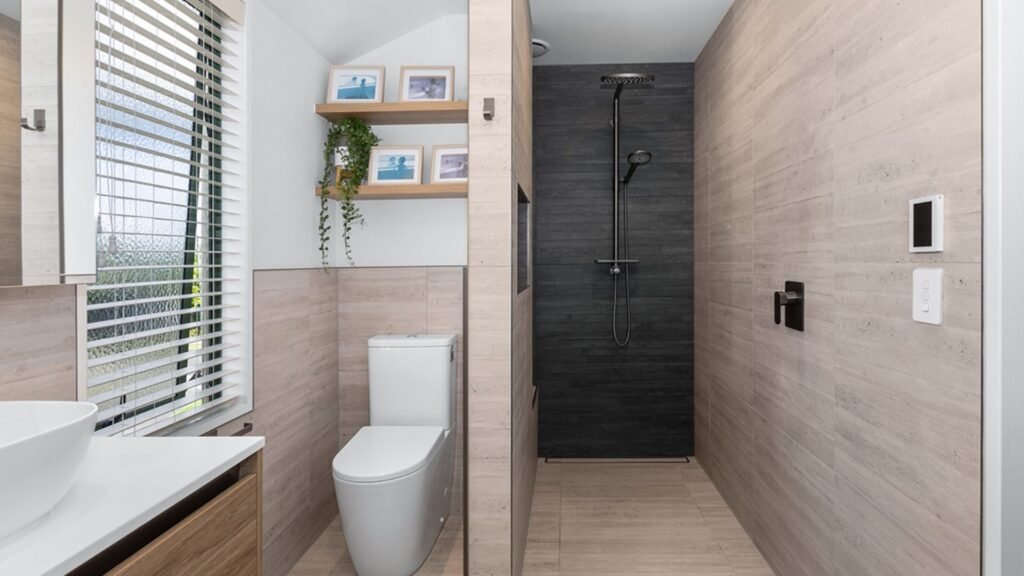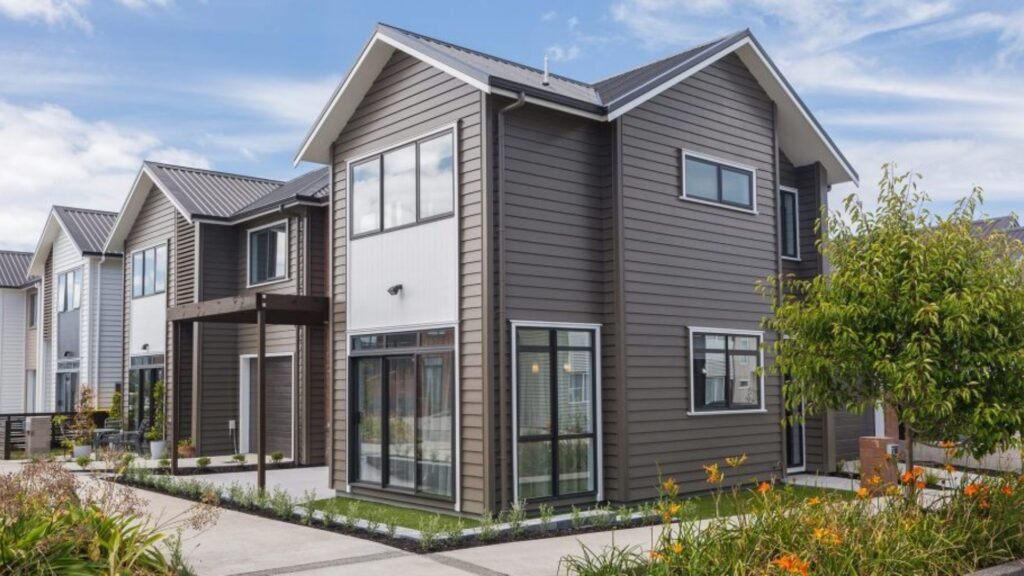Welcome to your go-to guide for understanding the new build cost per meter in NZ, a crucial topic if you’re planning to build a home anywhere across the country. Whether you’re dreaming of a sleek city townhouse or a cozy rural retreat, knowing what you’ll likely spend per square meter helps you plan smarter, avoid budget blowouts, and ask the right questions before you commit. In this post, you’ll get a clear breakdown of what “cost per meter” really means, what affects those numbers, how it changes by region, and how to estimate your true total build cost, so you can move forward with confidence, not confusion.
The average new build cost per square meter in New Zealand ranges from $2,500 to $4,000, depending on location, design, materials, and build complexity. Urban areas like Auckland typically cost more than regional towns. This estimate excludes land, consents, landscaping, and custom features. Always get a detailed quote from local builders to plan accurately.
Table of Contents
What Does “Cost Per Square Meter” Actually Mean?
When you hear builders, developers, or real estate agents in New Zealand talk about the “cost per square meter,” they’re referring to the estimated cost to construct each square meter of a new home. It’s a quick way to get a rough idea of how much a house might cost to build based on its size. But while this figure is useful for early budgeting, it’s not the full story.
What’s Included In The Cost Per Square Meter
The cost per square meter usually includes the basic construction elements of the house:
- Materials: This covers the timber, concrete, bricks, insulation, cladding, and other components that make up the structure of the home.
- Labour: The cost of the building team, including trades like carpenters, electricians, and plumbers, is included.
- Standard Fixtures And Fittings: Basic items such as doors, windows, kitchen cabinetry, flooring, and bathroom fittings are often factored in, but only at standard-grade quality.
Builders typically calculate this rate based on a standard home build with minimal design complexity. The more custom your build, the more likely the actual cost will go above the initial per-meter estimate.
What’s Not Included In The Cost Per Square Meter
Here’s where many people get caught out, there are several important costs that aren’t covered in this number:
- Land: The cost of buying your section is never included. This varies wildly by region, especially in places like Auckland or Queenstown.
- Design And Architect Fees: If you hire an architect or want a custom layout, those design services are additional.
- Landscaping: Grass, fencing, gardens, driveways, and outdoor spaces are usually not part of the base per-meter rate.
- Council Consents And Compliance Costs: You’ll need building consents, inspections, and possibly resource consents, depending on your site and design. These come with separate fees.
The cost per square meter gives you a general benchmark, but it doesn’t reflect your total build cost. If you’re planning a home, use this figure as a starting point, then speak with a local builder to create a more accurate, all-inclusive estimate based on your specific section, location, and goals.
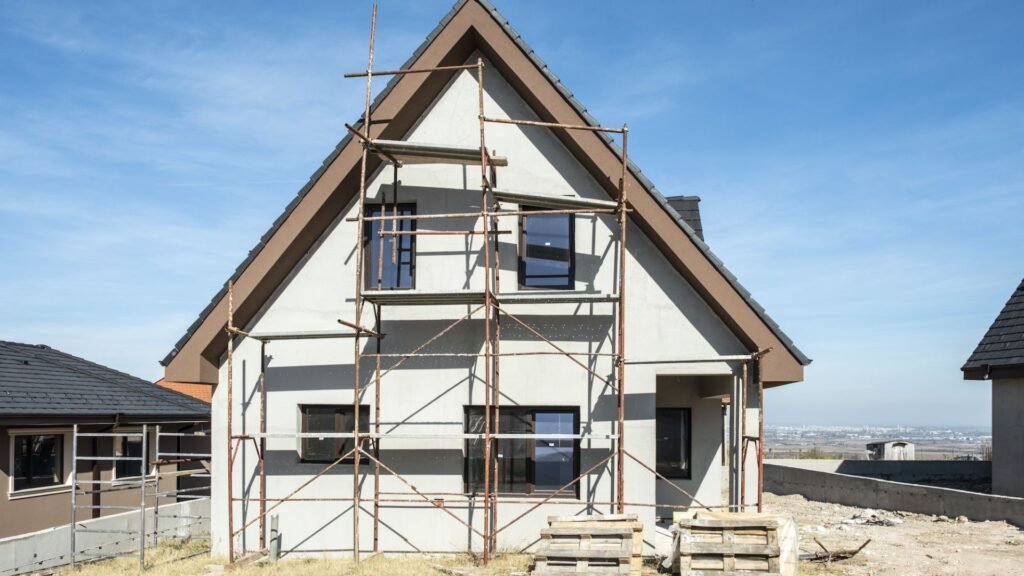
Average New Build Cost Per Meter In NZ
Understanding how much it costs to build a new home in New Zealand starts with one key metric: the average cost per square meter. This number gives you a solid baseline to work from when planning your build and estimating your budget.
National Average Range For Cost Per Square Meter
Across most parts of New Zealand, the average cost to build a new home sits between $2,500 and $4,000 per square meter. This figure typically covers construction only, things like materials, labour, basic finishes, and the structure itself. It doesn’t include the cost of land, consents, driveways, fencing, or landscaping.
The actual number you’ll pay depends heavily on what type of home you’re building. A compact, single-level home in a regional town will almost always cost less per square meter than a large, architecturally designed home in a high-demand urban area.
Comparison Of Basic, Mid-Range, And High-Spec Builds
Here’s how the cost can vary depending on the quality and style of the build:
- Basic Builds: These are typically entry-level homes with standard finishes and a simple layout. Expect costs around $2,500 to $2,800 per square meter. Builders often use prefabricated or kitset components to keep prices down. Ideal for first-home buyers or investors.
- Mid-Range Builds: This is the most common category. It includes better materials, more detailed finishes, and a wider range of design choices. Prices usually fall between $2,800 and $3,500 per square meter. These homes offer a good balance between quality and affordability.
- High-Spec Or Custom Builds: If you’re planning an architectural home with custom features, premium cladding, advanced insulation, and smart technology, your cost can rise to $3,500 to $4,500 or more per square meter. The more unique or complex the design, the more it will cost.
Remember, these figures are general guidelines. A home with a modest footprint but premium materials can end up costing more per meter than a larger home built with simple specs.
Impact Of Inflation And Supply Chain Issues
Recent years have brought significant challenges to the construction industry in New Zealand. Supply chain delays, material shortages, and rising freight costs have pushed up building expenses. Since the pandemic, prices for timber, steel, concrete, and insulation have jumped, sometimes by 20–30% or more.
Labour shortages have also affected pricing. Builders are in high demand, and that often translates into longer wait times and higher hourly rates. These factors have caused fluctuations in the average cost per square meter, and pricing that was accurate last year may not hold today. If you’re budgeting for a new build, always speak with local builders to get current estimates. Prices can shift quickly, and real-time quotes are far more reliable than old data or national averages.
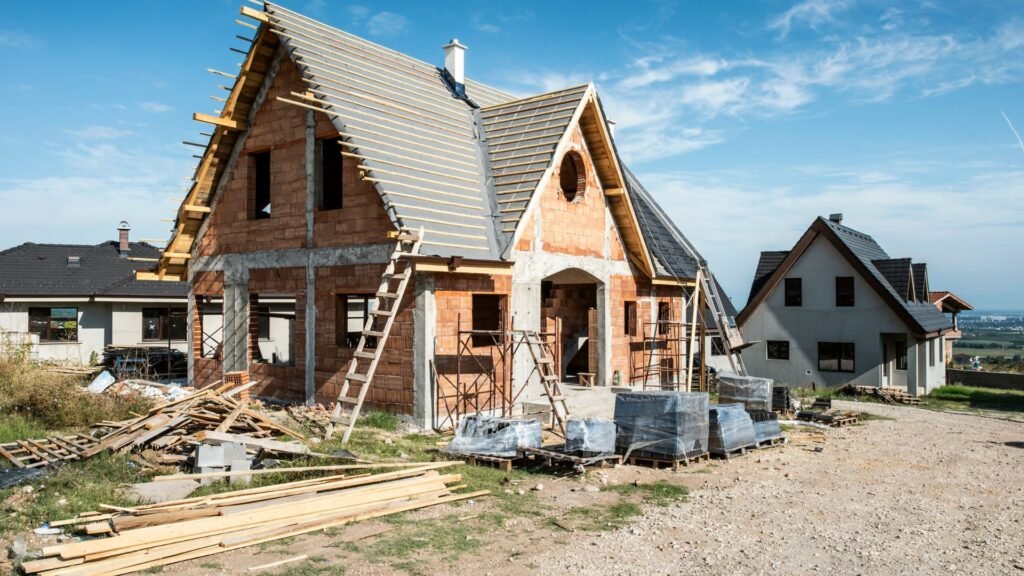
Regional Breakdown: How Costs Vary Across NZ
Understanding how build costs vary across New Zealand can help you set a realistic budget from the start. While the national average cost per square meter might fall between $2,500 and $4,000, where you build plays a major role in what you’ll actually spend. Labour availability, demand, transport costs, and local council fees all influence the final figure. Below is a closer look at how costs differ across some of New Zealand’s key regions.
Auckland
Auckland is the most expensive place to build in New Zealand. High demand for housing, a competitive labour market, and limited land availability all push prices up. On average, you can expect to pay between $3,000 and $4,500 per square meter, especially if you’re building in central or desirable suburbs. Traffic delays, site access challenges, and resource consent fees often add to the timeline and budget.
If you’re building on the outskirts of Auckland, like in Pukekohe or Warkworth, you may see slightly lower costs, but transportation and infrastructure charges can still raise the final price.
Wellington
Wellington tends to be slightly more affordable than Auckland but still comes with its own challenges. The city’s hilly terrain and strong wind zones mean site preparation and structural requirements often cost more. Build costs here typically range from $2,800 to $4,000 per square meter. Earthquake-prone areas may also require extra foundation work or engineering, which adds to your spend.
One advantage of building in Wellington is access to experienced architects and builders familiar with local conditions, which helps in planning around potential obstacles.
Christchurch
Christchurch is often seen as one of the more cost-effective cities for building, especially post-earthquake. The rebuild efforts have created a strong construction industry with more predictable pricing. Average costs range from $2,500 to $3,500 per square meter.
Flat land and newer subdivisions reduce the need for extensive earthworks, and many builders offer fixed-price packages tailored to Christchurch suburbs. However, some earthquake-related regulations can still affect certain builds, especially in older or red-zoned areas.
Hamilton & Tauranga
Hamilton and Tauranga are growing fast, which is driving up construction costs. In both cities, you’re likely to pay between $2,700 and $4,000 per square meter depending on the size, style, and site conditions. Labour shortages can lead to longer timelines, and some trades charge premium rates due to high demand.
Tauranga, being coastal, may also come with stricter council rules around floodplains and erosion zones. In both cities, new subdivisions are booming, which means more modern infrastructure and potentially easier builds, but also a rise in developer and service connection fees.
Regional Towns And Rural Areas
If you’re building in smaller towns or rural areas like Gisborne, Invercargill, or Whanganui, you could save significantly on construction costs. Prices in these regions may start as low as $2,200 per square meter. Lower land costs and a slower pace of construction can help with budgeting, but there are trade-offs.
In rural areas, you may face extra costs for getting materials delivered, hiring contractors who need to travel, or installing your own water and septic systems. Limited access to experienced builders could also affect timelines.
Real Example: A 150m² Build In Auckland Vs. Invercargill
Let’s say you’re building a 150m² home:
- In Auckland, at $4,000 per square meter, your build could cost around $600,000
- In Invercargill, at $2,300 per square meter, the same size home could cost around $345,000
That’s a difference of over $250,000, even before factoring in land, design choices, and extra features. This comparison shows why location matters just as much as floor area or style when budgeting your build.
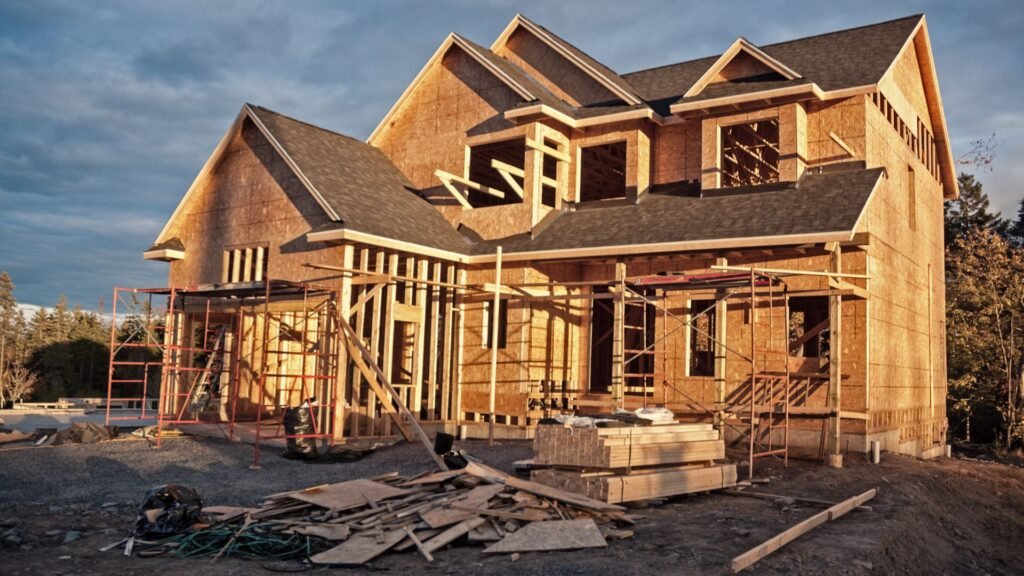
Key Factors That Influence Build Costs
When you’re planning a new build in New Zealand, understanding what drives your costs up, or helps you save, is critical. While most people focus on the average cost per square meter, that figure is only a starting point. There are many variables that affect your final build cost, and knowing them helps you make smarter decisions.
Here’s a closer look at the main factors that influence how much you’ll spend:
Location (Urban Vs Rural)
Where you choose to build makes a major difference in cost. In cities like Auckland or Wellington, prices are usually higher due to increased demand, stricter regulations, and expensive subcontractor rates. On the other hand, rural areas may offer cheaper land and lower labour costs, but you may need to pay more for transport, delivery fees, or local council compliance. If your site is remote, access issues or limited builder availability can also add to your budget.
Land Condition And Site Prep
Your section’s condition plays a big role in overall cost. Flat, cleared land is easier and cheaper to build on. But if your section has slopes, rocky terrain, soft soil, or needs major earthworks, expect to pay more. Site prep can include excavation, levelling, drainage, retaining walls, and extra foundation work, none of which are included in a base build quote. Always get a geotechnical report before you commit to land. It can save you thousands later.
Design Complexity And Layout
The more complex the home design, the higher the cost per square meter. A simple rectangular floor plan is cheaper to build than a home with multiple wings, split levels, or curved walls. More angles, custom shapes, or second storeys mean more materials, labour, and time.
Also, open-plan layouts or vaulted ceilings may require added structural support, which bumps up the engineering and framing costs.
Materials And Finishes
Your material choices can swing your budget by tens of thousands of dollars. Basic materials like standard cladding, roofing, and insulation cost less. If you opt for premium materials, stone benchtops, timber flooring, double-glazed windows, or designer fixtures, costs rise fast.
Also, supply chain delays can make imported materials more expensive or slow down your build. Sticking to locally sourced options may help control costs and timelines.
Labour Shortages Or Demand In Your Area
Labour availability can affect how much you’ll pay, and how long it’ll take. In regions where there’s a high demand for builders, plumbers, or electricians, labour rates go up. Shortages can also mean delays if subcontractors aren’t available when you need them. In contrast, if you’re building in an area with a steady supply of tradespeople, you may get better pricing and smoother scheduling.
Build Type: Standard Home, Architectural, Prefab
Your choice of build type also plays a big role in cost. A standard builder-grade home with a basic plan is usually the most affordable. Architectural builds, designed by custom architects, tend to cost more due to unique designs and complex specifications.
Prefab or transportable homes can be a more cost-effective choice, especially if you’re working with a tight budget or rural location. But don’t forget to factor in transportation and site connection costs.
Understanding these factors gives you more control over your build. Instead of being surprised by extra costs, you’ll know what to expect, and where you can cut back or invest more. Always get multiple quotes, ask detailed questions, and work with a builder who can break down the pricing clearly. That way, you’re not just chasing the cheapest price, but making informed decisions that fit your goals and budget.
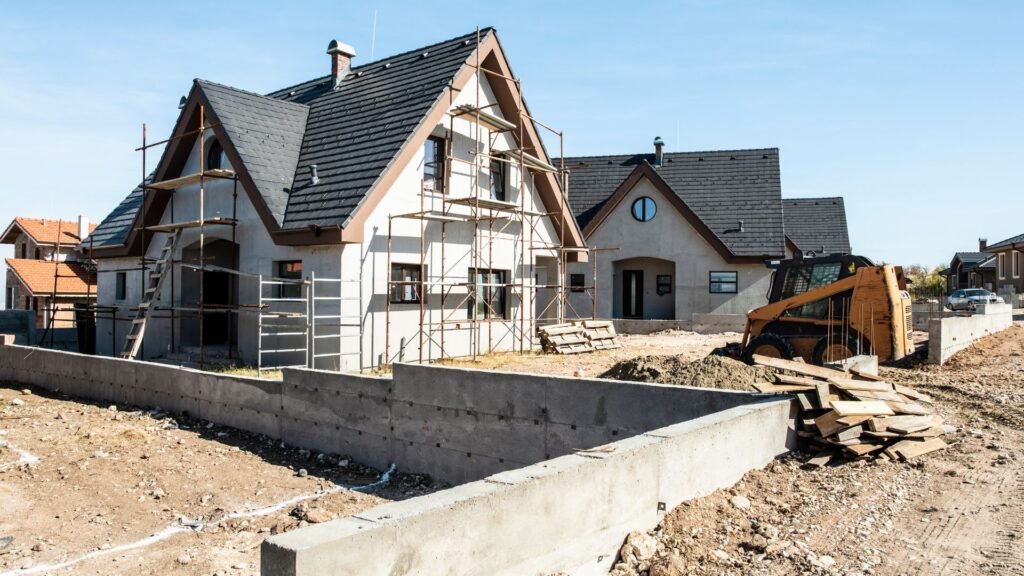
What’s Usually Not Included In “Per Meter” Rates
When you see a price tag like “$3,000 per square meter” for a new build in New Zealand, it’s easy to assume that everything is covered. But that number often refers to the base build cost only, the structure, standard materials, and basic interior fit-out. There are several important elements that fall outside this estimate, and if you’re not aware of them, they can quickly blow up your budget.
Here’s a breakdown of what’s usually not included in the cost-per-meter rate and why it matters for your planning:
Council Fees And Consents
Before you can start building, you’ll need the proper approvals from your local council. These include building consents, resource consents (if applicable), and inspection fees.
Costs vary depending on your location and the complexity of your build, but they can easily add several thousand dollars to your total. These fees are not part of the per-meter cost because they are handled separately and paid directly to your local authority.
- Tip: Always ask your builder or architect whether they include these in your initial quote, or if you’ll need to pay them out of pocket.
Driveways, Fencing, Landscaping
Once your home is built, you’ll still need to make the outside livable. That includes:
- Concrete or paved driveways
- Boundary fencing for privacy and security
- Basic or advanced landscaping, like turf, gardens, or retaining walls
These features are usually not part of the per-meter quote. Builders consider them extras or post-construction add-ons, so they’re itemised separately or left for the homeowner to handle later.
• Why it matters: Without budgeting for these, your property may not be move-in ready, even if the house itself is complete.
Custom Architectural Designs
Many builders offer standard plans at a fixed per-meter rate. If you want something more unique, like a split-level design, cathedral ceilings, or energy-efficient layouts, you’ll likely need a custom architectural plan.
This comes with:
- Additional design fees
- Longer approval timelines
- Higher build costs due to complexity
Custom features increase your home’s value and comfort, but they aren’t included in generic per-meter estimates. You’ll pay more for the creative work and often more for the actual build.
Upgrades Like Solar Panels Or Smart Systems
If you’re planning to install solar energy systems, EV chargers, or smart home features like app-controlled lighting and heating, these will be treated as optional upgrades.
They require:
- Special equipment
- Expert installation
- Additional compliance or electrical work
Most per-meter prices cover only the basics, standard lights, plugs, and appliances. Any technology outside of that is considered a premium feature and quoted separately.
- Advice: Decide early if these upgrades are a must-have so you can compare builders who offer energy-smart packages upfront.
Furnishings And Appliances
Many new homeowners are surprised to learn that per-meter pricing usually covers only built-in fixtures, not everyday items like:
- Refrigerators
- Washing machines
- Curtains or blinds
- Furniture
Even some kitchen appliances, like dishwashers or microwaves, may be excluded unless specified. This means you’ll need a separate budget to fully furnish and equip your new home.
The per-meter rate gives you a helpful baseline, but it’s not your total cost. Always ask your builder for a full list of exclusions and plan ahead for these often-overlooked expenses. By understanding what’s included, and what’s not, you’ll avoid surprises and stay in control of your budget from start to finish.
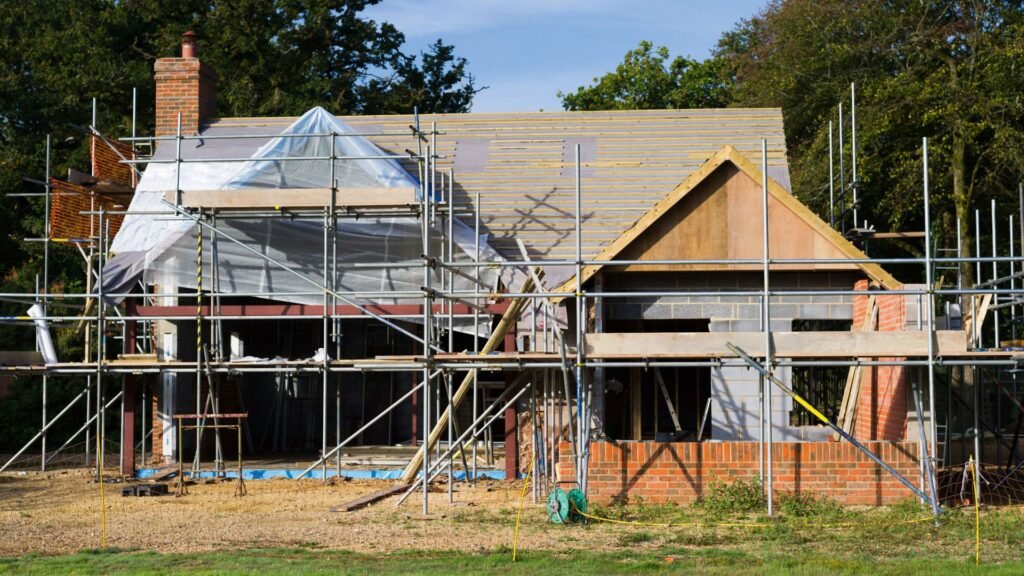
Hidden Costs First-Time Builders Often Miss
Building a home in New Zealand is exciting, but many first-time builders underestimate the total cost. Beyond the standard per-square-meter rate, there are hidden expenses that can quickly add up. These are often not included in the builder’s initial quote and can catch you off guard if you’re not prepared. Below are some of the most common hidden costs you should factor into your budget before breaking ground.
Unexpected Groundworks
Not all land is build-ready. Once excavation begins, you may discover issues like poor soil quality, buried rocks, or uneven terrain that require extra site preparation. These issues often lead to added costs for earthmoving, soil replacement, or structural reinforcement. A geotechnical report can help, but even then, surprises can still pop up during excavation. First-time builders should set aside a contingency budget for any unexpected groundwork adjustments.
Extra Insulation For Code Compliance
New Zealand’s building code requires specific insulation standards depending on the climate zone you’re building in. What many don’t realize is that achieving compliance, especially in colder areas, can mean upgrading insulation in walls, ceilings, and under floors. These upgrades aren’t always included in base quotes from builders, especially if you’re aiming for higher energy efficiency. If you want a warmer, more energy-efficient home, plan for the cost of additional insulation from the start.
Drainage Or Retaining Walls
If your land is sloped, unstable, or near a water source, you may need to install drainage systems or build retaining walls to protect the site. These aren’t just optional features, they’re often legally required for building consent. The price for these structures can range from a few thousand dollars to tens of thousands, depending on your property’s layout. Always include a drainage and landscaping review in your site assessment.
Project Delays And Cost Overruns
Delays are common in construction, especially during peak seasons or in areas with limited tradespeople. Weather, supply shortages, or council approval delays can push your timeline out by weeks or even months. The longer your project takes, the more you’ll pay in labour and possibly for storage or equipment hire. Cost overruns also happen if you make design changes mid-build or encounter issues that weren’t part of the original quote. To stay on track, communicate clearly with your builder and lock in decisions early.
Temporary Housing If The Build Takes Longer
Most first-time builders don’t plan for where they’ll live during construction, or how long they’ll need to stay there. If you sell your current home before the new one is ready, or if delays push your move-in date, you might need to rent temporary accommodation. Depending on your location, short-term rentals can be expensive, especially over several months. Make sure your housing plan is flexible and budget-friendly in case your build doesn’t go exactly to schedule.
When budgeting for your new home, don’t just focus on the square-meter rate. The real cost of building in NZ includes many variables, some visible, others hidden. Planning for these hidden costs upfront gives you a better chance of staying within budget and reducing stress throughout the process. A good rule: add 10%-20% to your total estimated budget for unexpected expenses. It’s better to have a buffer than face a shortfall.
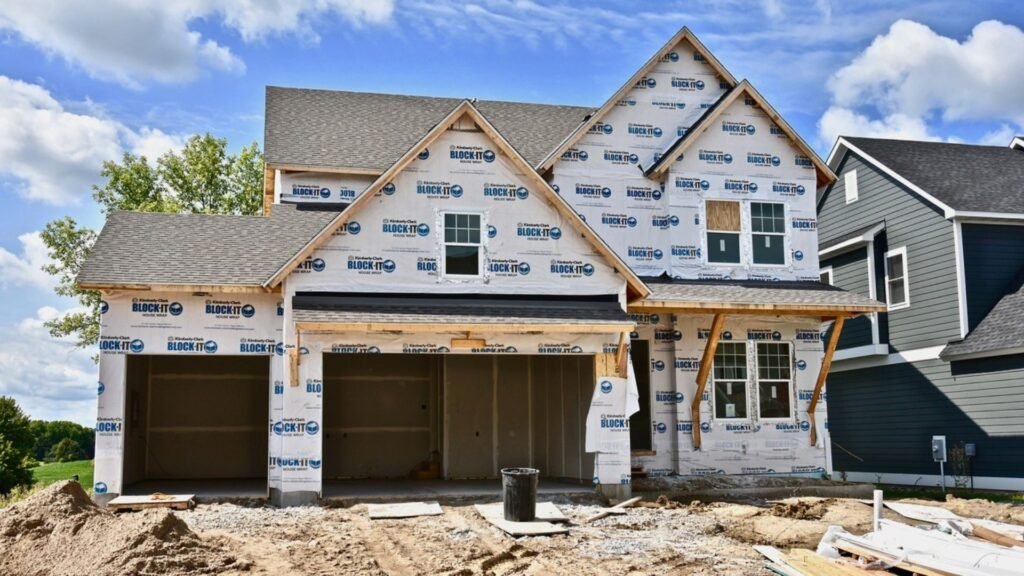
How To Estimate Your Build Cost Accurately
Estimating your new build cost in New Zealand isn’t just about plugging numbers into a calculator. It’s about understanding what goes into those numbers, and what’s likely to change. Here’s how you can get a clearer, more realistic picture of your total building costs without being caught off guard halfway through your project.
Use Cost-Per-Meter As A Base, Not A Final Quote
The cost-per-square-meter figure is a helpful starting point, but it’s not the full story. Think of it as a general benchmark that gives you a ballpark estimate based on recent market trends. For example, if you’re looking at an average of $3,000 per square meter and planning a 160m² home, your base cost would be around $480,000.
But that number doesn’t reflect your land, site conditions, council fees, or any custom choices. It’s just the shell, expect to spend more as you add details and upgrades.
Multiply By Estimated Size, Then Factor In Extras
Once you have your base rate, multiply it by the total square meters of your planned build. Be honest with the size, many homeowners underestimate how much space they’ll actually need. Then, factor in extras like:
- Resource and building consents
- Driveways, decks, and fencing
- Kitchen and bathroom upgrades
- Heating, ventilation, and cooling systems
- Landscaping and outdoor areas
Some of these extras could easily add $50,000 to $100,000 or more, depending on your preferences.
Talk To Local Builders For Tailored Estimates
No one understands real-world costs better than experienced local builders. Once you have your initial estimate, reach out to at least two or three builders in your area and ask for detailed quotes. They’ll help you understand:
- How your land impacts cost (e.g. steep sections, drainage issues)
- What material and labour costs are like in your town
- Realistic timelines based on current demand
- How council regulations or zoning rules might affect your plans
This step often reveals hidden costs you may not have considered, like soil testing or retaining walls.
Mention Free Online Calculators From NZ Sources
There are several free tools available that can help you estimate your costs more precisely. Look for calculators from well-known NZ building companies, mortgage providers, or government housing websites. These tools often ask you to input home size, location, build type, and finish quality.
While they won’t be 100% accurate, they give you a stronger starting point than a rough guess, and help you identify whether your dream design fits your current budget.
Recommend Getting At Least 2–3 Quotes
Comparing multiple quotes helps you avoid overpaying, and it also helps you learn what’s reasonable. One builder might charge more for labour but offer better quality materials or shorter build times. Another might seem cheaper but use less durable products. Ask each builder to break down:
- Labour vs materials
- What’s included and what’s not
- Payment schedule and timeframes
- Whether the quote is fixed or subject to change
A good quote isn’t just about price, it’s about value, transparency, and trust.
Getting an accurate estimate for your new build in NZ takes time and research, but it’s worth it. It gives you clarity, protects your budget, and helps you make better decisions from day one. Always leave room for unexpected costs, ask questions, and plan as if everything will take longer, and cost a little more, than you think. That mindset will keep your build on track and your stress levels down.
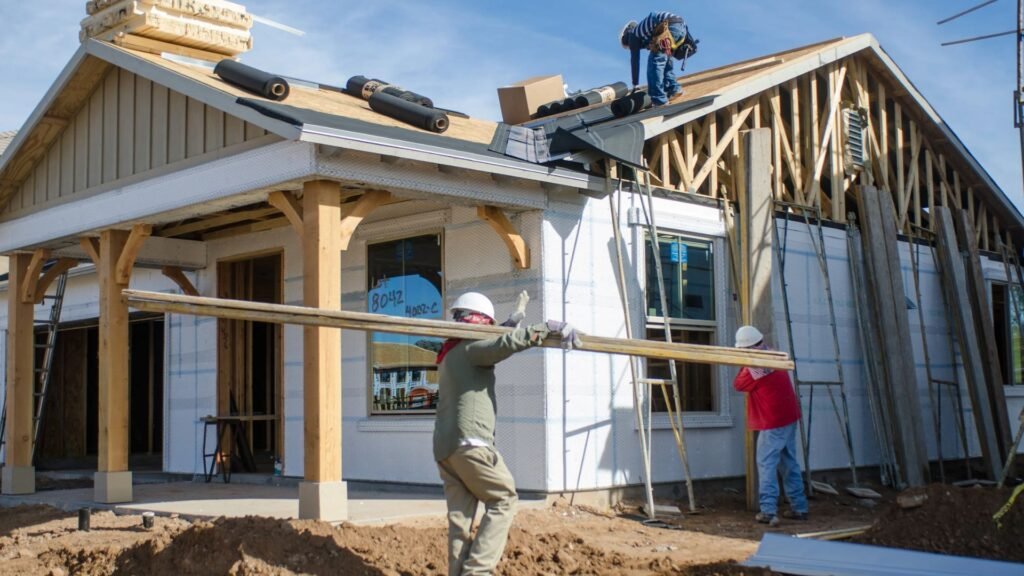
Budgeting Tips To Stay On Track
Building a new home in New Zealand is exciting, but it can also be financially stressful if you don’t plan properly. Many first-time builders underestimate how quickly costs add up. While a per-square-meter estimate gives you a starting point, sticking to your budget requires careful decisions from day one.
Here are some practical budgeting tips to help you stay on track, avoid surprises, and keep your build moving forward with confidence:
Add A Buffer (10–20%)
Always expect the unexpected. Costs can rise during a build due to supply delays, weather issues, or changes in labour availability. Adding a 10–20% buffer to your budget helps you cover these without stress. For example, if you expect to spend $500,000, set aside an extra $50,000 to $100,000. It might sound like a lot, but it’s better than running out of funds mid-project.
Prioritise Needs Vs. Wants
Decide early on what’s essential and what’s just nice to have. Heated floors, skylights, or designer tiles might be tempting, but if they push you over budget, it’s smart to pause. Focus first on structure, insulation, layout, and energy efficiency. You can always add high-end extras later when your budget allows.
Avoid Mid-Build Design Changes
Changing your mind halfway through the build is one of the fastest ways to blow your budget. Every design tweak, whether it’s moving a wall, choosing new fixtures, or upgrading materials, means more time, labour, and cost. Lock in your plans early and stick to them unless a change is truly necessary.
Choose Fixed-Price Contracts If Possible
Ask your builder if they offer a fixed-price contract. This type of agreement outlines exactly what’s included and sets a fixed cost, reducing your exposure to surprise charges. While it may not cover every variable, it does create more cost certainty than open-ended or cost-plus contracts.
Work With A Project Manager Or Builder Early
Bringing in a builder or project manager during the design stage can save money in the long run. They’ll help you identify cost-saving opportunities, spot design flaws, and plan more efficiently. The earlier you involve professionals, the better your budget and timeline will stay under control. Smart budgeting isn’t about cutting corners, it’s about making informed choices. A well-planned build gives you more control, less stress, and a home you can enjoy without financial regret. Think of your budget as a tool, not a limit. It’s there to help you build with peace of mind.
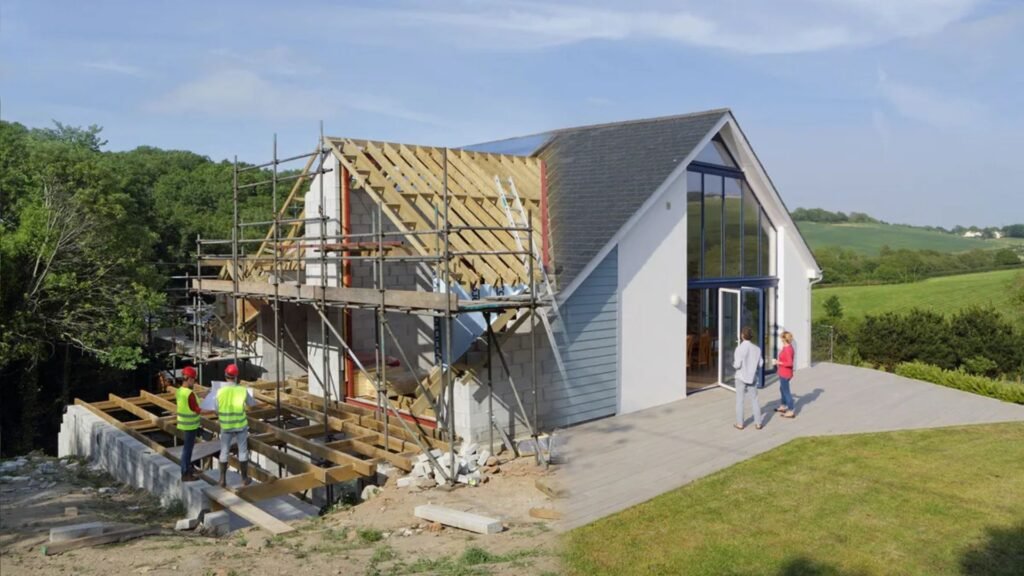
Ways To Reduce Your Build Costs Without Cutting Quality
Building a new home in New Zealand is a major investment, but that doesn’t mean you have to sacrifice quality to stay within budget. With careful planning and smart decisions, you can lower your build costs while still creating a well-designed, durable home. Here are practical ways to save money without cutting corners.
Simplify Your Floor Plan
One of the easiest ways to reduce building costs is by simplifying your floor plan. Complex shapes, multiple wings, and unusual angles all add extra materials, labour, and time. A rectangular or square layout is more cost-efficient to build and easier to insulate and heat. Fewer hallways, smaller footprints, and open-plan living spaces can also reduce overall size while keeping the home functional and stylish.
Instead of focusing on extra rooms or elaborate layouts, focus on smart use of space. Ask yourself: Do you really need a second living area or a home office if space is tight? A simpler plan can still feel spacious when designed well.
Choose Cost-Effective Cladding And Roofing
Exterior finishes can eat up a large portion of your budget. While high-end cladding materials like stone or custom brick look great, they’re also expensive to install and maintain. Look into options like fibre cement, corrugated iron, or painted weatherboard, materials that are durable, attractive, and more affordable.
The same applies to roofing. Metal roofing is often cheaper and quicker to install than tiles. It’s also ideal for collecting rainwater and handling New Zealand’s varying weather. If you choose materials that are widely available and commonly used in your region, you’ll likely pay less in both material and labour.
Build Up (Two Storey) Instead Of Out
When land is limited or expensive, as it is in many parts of NZ, it often makes sense to build up rather than out. Two-storey homes use less foundation and roof area per square metre of internal space, which can help cut costs.
Although a second storey may require stairs and added structural considerations, you’ll save on land use and potentially avoid extensive site prep. This approach also works well on smaller urban lots where you want to maximise living space without blowing your budget.
Consider Prefabricated Or Transportable Homes
Prefab and transportable homes are gaining popularity across NZ for a good reason, they’re generally cheaper to build and faster to assemble. These homes are constructed off-site in a controlled environment, which reduces weather delays and improves build precision.
Many prefab designs are now modern, energy-efficient, and customizable. You can often choose from a variety of layouts, finishes, and add-ons. Plus, reduced build times mean you could save money on rent or temporary accommodation while you wait.
Reuse Or Recycle Where You Can
If you’re willing to get hands-on and think creatively, reusing or recycling materials can make a real difference. Salvaged timber, bricks, doors, or fittings from demolition yards or old homes can add unique character and cut material costs.
You don’t have to reuse everything, but even repurposing a few elements, like using second-hand cabinetry or recycled benchtops, can help you stay within budget. Just make sure all reused materials meet current NZ building standards.
By making smart choices in your design, materials, and building methods, you can keep your costs down without sacrificing quality. Always talk to your builder or architect about these options early in the planning process, they may have additional local insights or cost-saving suggestions based on experience.

Should You Choose Cost Per Meter Or Full Turnkey Pricing?
When planning a new home build in New Zealand, one of the first questions you’ll face is how your builder will price the job. Two common pricing models are cost per square meter and full turnkey pricing. While both have their place, they serve different purposes depending on your needs, experience, and budget expectations.
Understanding the pros and cons of each helps you choose the best option for your situation, and avoid nasty surprises halfway through the build:
Pros And Cons Of Both
Cost Per Meter
Pros
- Gives a quick ballpark estimate early on
- Useful for comparing multiple builders
- Offers flexibility if you want to manage some parts of the build
- Can work well for experienced homeowners or developers
Cons
- Often doesn’t include all costs (e.g., earthworks, permits, driveways)
- Prone to variations and budget blowouts if not tightly managed
- Easy to underestimate total cost if you’re new to building
- You may end up paying for add-ons that weren’t clearly quoted
Full Turnkey Pricing
Pros
- One fixed price for everything, from foundations to handing you the keys
- Clear contract protects you from cost overruns
- Ideal for first-home buyers or anyone who wants peace of mind
- Usually includes landscaping, fencing, and even letterboxes
Cons
- Less flexibility to make design changes during the build
- Higher upfront quote (though not always more expensive overall)
- Some turnkey builders use base pricing to advertise, then charge extras later
Who Each Pricing Model Suits Best
Cost Per Meter Suits
- Experienced property investors or developers
- Those building custom architectural homes
- People who want to source their own fixtures or finishes
- Budget-conscious owners who can manage parts of the project themselves
Full Turnkey Pricing Suits
- First-home buyers who want a stress-free process
- Busy professionals or families with limited time
- Buyers using home loans that require fixed contracts
- People building from a developer’s plan or house-and-land package
Choosing the right pricing model depends on how much control you want and how involved you’re willing to be. If you value flexibility and have experience, cost per meter might work well. If you want simplicity and cost certainty, turnkey is often the safer bet.
Real Examples Or Case Studies
Example 1: First-Home Buyers In Christchurch
A couple purchased a house-and-land package with a fixed full turnkey price of $780,000. It included fencing, landscaping, a heat pump, driveway, and even curtains. There were no surprise costs, and the build was completed in eight months. They felt in control of their budget the entire way.
Example 2: Custom Home In Queenstown
An experienced builder-owner opted for a cost per meter quote of $3,000/m² for a 200m² home. The base estimate was $600,000, but final costs reached over $730,000 due to site challenges, design changes, and material upgrades. The owner had more design freedom but took on more risk and time involvement.
Example 3: Investor Building Duplexes In Hamilton
A property investor building two attached units used the cost per meter model with a known builder. They locked in a rate of $2,850/m² but managed landscaping, consents, and kitchen upgrades separately. This let them keep margins tight while tailoring specs for resale value.
Both pricing options can work, but only if you know what’s included, what’s not, and what level of involvement you’re comfortable with. Always ask for a detailed breakdown and compare quotes carefully before signing anything.
Looking to build your dream home in New Zealand? Visit our homepage to explore how we can help you plan smarter, spend better, and build with confidence.
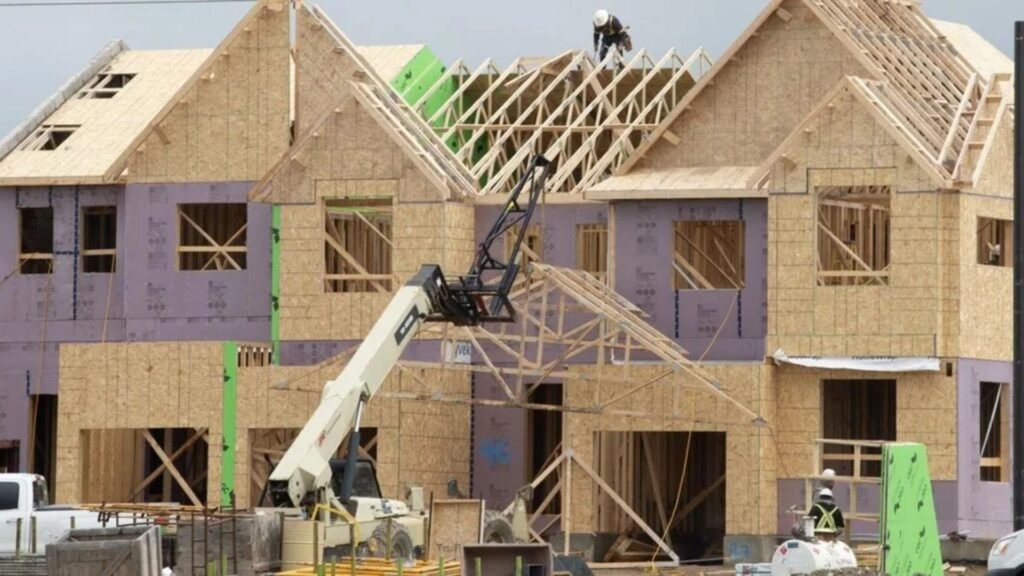
FAQs: About New Build Cost Per Meter In NZ
What is the average new build cost per square meter in NZ?
The average cost ranges from $2,500 to $4,000 per square meter. Basic builds start on the lower end, while high-spec or custom homes can exceed $4,000. Costs vary by region, design, materials, and builder.
Does the cost per meter include land?
No, the cost per meter refers only to the construction of the house itself. It does not include the price of land, site preparation, or council fees.
Why do costs vary between regions in New Zealand?
Regional differences in labour rates, material availability, and local demand affect pricing. For example, building in Auckland is often more expensive than in smaller towns due to higher labour and land costs.
What factors increase the cost per square meter?
Complex designs, multi-storey layouts, high-end finishes, sloped sites, and remote locations can all increase the per-meter cost. Labour shortages or building delays also contribute to higher prices.
What is not included in the per-meter estimate?
It usually excludes council consents, driveways, fencing, landscaping, architect fees, and upgrades like solar systems or underfloor heating. Always confirm with your builder.
Is it cheaper to build or buy a house in NZ?
It depends on location and timing. In some areas, building can be cheaper if land is affordable. In others, existing homes may offer better value due to rising construction costs and material shortages.
Can I use KiwiSaver to build a home?
Yes, you may be able to withdraw KiwiSaver funds to purchase land and build a home, provided you meet the eligibility criteria. Check with your KiwiSaver provider and the First Home Grant scheme.
How can I estimate my total build cost?
Multiply the cost per meter by your planned floor area, then add a buffer of 10–20% for extras and unexpected costs. Include all external costs like consents, landscaping, and fittings for a more accurate estimate.
Are prefab or transportable homes cheaper per meter?
In many cases, yes. Prefab homes often have lower build costs per meter due to streamlined production. However, transport and site setup costs must be factored in.
How long does it take to build a house in NZ?
A standard new build takes 6 to 12 months, depending on the design, site conditions, and builder availability. Complex or custom homes can take longer, especially during periods of high demand.
Conclusion
Building a new home is a big step, and understanding the cost per square meter in New Zealand helps you stay informed, prepared, and in control of your budget. We’ve covered what this cost includes, what it doesn’t, how it varies by region, and what factors can influence your final spend. Before you commit to any plans, take time to research local market conditions and talk to a licensed builder who understands your area and goals. Every build is different, and personal advice can go a long way.
